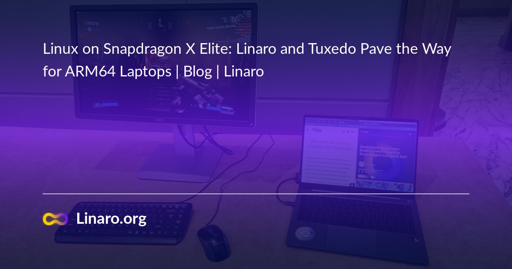“Pave the way for ARM64 laptops?”
I have an ARM64 laptop as my daily driver right here on my desk and it’s happily running Debian 13. The road is quite paved already.
So a 12.5 screen, 12Ah battery, 2kg laptop with only USB A ports available in 6 months for a starting price of 1550€ - Please excuse the slight irregularity in my eyebrow line here.
No: the waiting time is more like 9 months and fully-loaded, you’re looking at north of €1,800 :)
The point of MNT machines isn’t value for money, but openness and sovereignty over what you own. They’re not for everybody, but my kids are out of the house, the house is paid for and so I have the means to put my money where my convictions are.
But no matter: the point was that Linux ARM laptops really are nothing new.
Yeah, tho I’m doing the opposite : Asahi on a macbook pro. Works great while indeed hurting conviction.
Asahi is a powerful example of what a small well motivated team can achieve. However they are still face the sisyphean task of reverse engineering entirely undocumented hardware and getting that upstream.
If you love Apples hardware then great. Personally when I have Apple hardware I just tweak the keys to make it a little more like a Linux system and use brew for the tools I’m used to. If I need to I can always spin up a much more hackable VM.
The road isnt really paved, everyone took their own path. You have to commit to your arm64 hw platform.
There are quite a few arm64 laptops, hybrid tablets, even towers. But I can’t predictably decide which one I want because hardware specs and drivers for arm64 are almost all different, which is the same problem with riscV getting more adoption.
However, the work of giving owners more options for Linux on arm64 is good, just like the surface Linux kernel for ms surface products.
Arm has been slowly pushing standardisation for the firmware which solves a lot of the problems. On the server side we are pretty much there. For workstations I’m still waiting for someone to ship hardware with non-broken PCIe. On laptops the remaining challenge is power usage parity with Windows and the insistance of some manufacturers to try and lock off EL2 which makes virtualization a pain.
We’ve been “almost there” for 10 years. Ampere was supposed to come in scaled-down versions for laptops and workstations, but we never saw those.
I’ve got an Ampere workstation (AVA) which from a firmware point works fine. They may even fix the PCIe bus on later versions.
I’m running a Lenovo Slim 7 with the Ubuntu Concept Image for X Elite Laptops and it rocks! You can see the support (what works & what’s not yet there) in their 🧵 Ubuntu 24.10 Concept Snapdragon X Elite
Same laptop and distro here, and I agree. But still hoping to have proper sleep/hibernation, speaker/mic support and web cam in the future. It’s a shame that Qualcomm and Lenovo haven’t been more cooperative on hardware support.
Totally agree with you, considering the close cousin (thinkpad) has full support, it’s clear Lenovo just doesn’t care to provide a working device tree. I hope more vendors will emerge in the market segment of fully supported Linux laptops, yet none come close to the form factor of many mainstream distributors like Lenovo, Dell & Apple :(
‘Nother former Asashi Linux user here (now using a Fedora VM on my M4 MBA until Asahi is natively supported 🤞); just here to say we are all for it! From the moment I first tested it on my M1 MBA, I knew this was the way for the future, and I am glad to see wider adoption of Linux on ARM device devices beyond Apple Silicon.
I’m looking forward to getting an old ARM computer and installing Linux without any worry one day🤞
deleted by creator





